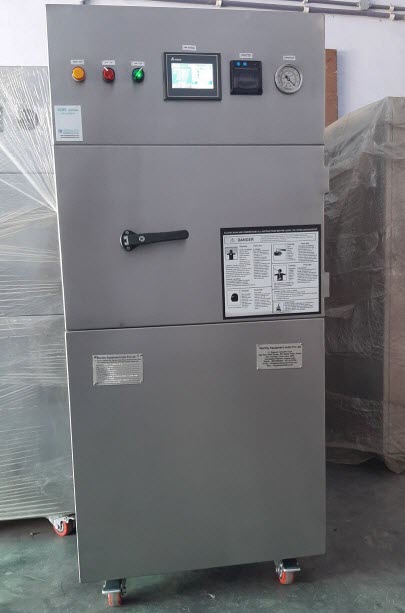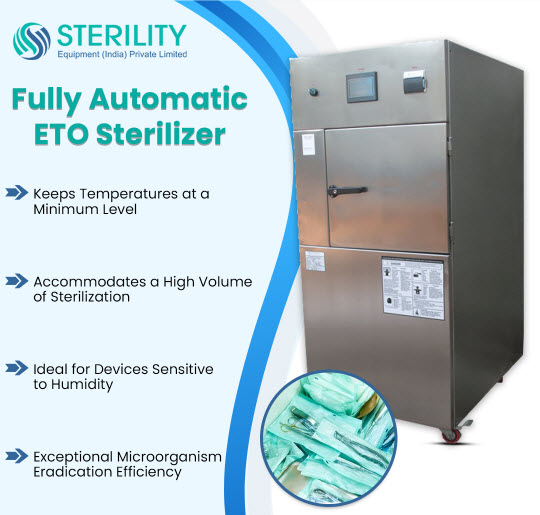In the realm of Japanese medical device manufacturing, ETO Sterilizers play a pivotal and indispensable role. These sterilizers are instrumental in ensuring the safety and efficacy of various medical equipment. In this article, we shed light on the significance of sterilization techniques with a particular focus on Ethylene Oxide (ETO) and its exceptional impact.
Japan’s steadfast commitment to precision and innovation in the medical industry is widely recognized, making it crucial to understand the applications of ETO Sterilizers in this context. The effective sterilization of medical devices is imperative to eliminate harmful microorganisms and pathogens, ensuring that the equipment meets rigorous safety standards.
Advantages of ETO Sterilizers for Medical Devices
ETO Sterilizers provide a wide array of benefits that make them indispensable for medical device sterilization. Unlike conventional methods, ETO sterilization stands out for its effectiveness and reliability in eliminating microorganisms and bacteria. This thorough disinfection ensures that medical instruments are safe for use in critical procedures.
One of the key advantages of ETO sterilization lies in its low-temperature process. This feature is particularly valuable for materials that are sensitive to high heat, such as plastics, electronics, and certain metals. By utilizing lower temperatures, ETO sterilization guarantees the integrity and functionality of delicate medical equipment, avoiding any potential damage or distortion that may occur with traditional high-heat sterilization methods.
The safety and compatibility assured by ETO sterilization are crucial for intricate medical devices with complex designs and sensitive components. Unlike other sterilization techniques, ETO sterilizers can penetrate deep into small crevices and hard-to-reach areas, ensuring complete sterilization without compromising the device’s structure.

Ensuring Product Quality and Patient Safety
In the dynamic landscape of the Japanese medical industry, upholding the highest product quality and ensuring patient safety is paramount. ETO Sterilizers play a pivotal role in achieving these essential objectives through their adherence to stringent regulatory standards and advanced sterilization capabilities.
Medical devices produced in Japan are subject to rigorous quality control measures, and ETO Sterilizers contribute significantly to this process. By utilizing Ethylene Oxide, these sterilizers effectively penetrate complex geometries and intricate surfaces of medical instruments, leaving no room for harmful pathogens to survive. This comprehensive disinfection process ensures that the devices are free from any potential contaminants, bolstering the safety and reliability of medical equipment used in critical healthcare procedures.
The meticulous application of ETO Sterilizers in the Japanese medical industry significantly minimizes the risk of infections associated with medical devices. By eliminating microorganisms and pathogens at a deep level, ETO sterilization enhances patient care and contributes to improved health outcomes. Healthcare professionals and patients can have confidence in the safety and efficacy of medical devices that undergo this rigorous sterilization process.
Compatibility with Diverse Medical Instruments
The remarkable versatility of ETO Sterilizers is evident in their seamless compatibility with a wide array of medical instruments. Whether it’s essential surgical tools, intricate electronic devices, or even life-changing implants, ETO sterilization proves to be an adaptable and effective sterilization method for a diverse range of materials.
ETO sterilization stands out for its ability to cater to the unique needs of various medical instruments. Unlike some other sterilization techniques, ETO sterilizers can effectively treat a vast assortment of materials, including plastics, metals, rubber, and more. This capability ensures that medical devices made from different materials can undergo comprehensive sterilization, meeting the stringent safety requirements of the Japanese medical industry.
The adaptability of ETO sterilization underscores its immense significance in Japanese medical device manufacturing. In a landscape where innovation and specialization are highly valued, ETO Sterilizers provide the necessary flexibility to sterilize cutting-edge medical instruments. Whether it’s groundbreaking surgical equipment or revolutionary electronic devices, ETO sterilization plays a pivotal role in ensuring their safety and efficacy.
Challenges and Solutions in ETO Sterilization
To overcome these challenges, Japanese medical device manufacturers need to implement strict safety measures and continually optimize their processes. They should establish robust protocols to reduce residual ETO levels and adopt proper aeration and degassing procedures to ensure that ETO gas is fully removed from sterilized devices.
Additionally, thorough testing and validation are necessary to address material compatibility concerns. Manufacturers should conduct comprehensive assessments to determine the suitability of different materials for ETO sterilization. If certain materials are incompatible, alternative sterilization methods should be explored to maintain the device’s quality and effectiveness.
Regular auditing and monitoring of ETO sterilization processes can help to identify and promptly rectify any potential issues. It is also important to provide healthcare professionals and staff with training on the proper handling and disposal of ETO-sterilized devices, which can further improve safety and reduce risks.
Future Trends in ETO Sterilization Technology
The future of ETO Sterilization technology in the Japanese medical device industry holds immense promise. Advancements and innovations are set to elevate the sterilization process to new heights, providing even greater benefits for both manufacturers and end-users.
A key area of development lies in refining aeration methods after the sterilization process. Aeration is critical to removing residual ETO gas from medical devices, ensuring they are safe for use. Future ETO Sterilizers are expected to incorporate more efficient aeration techniques, reducing the time needed for degassing and accelerating the overall sterilization cycle.
Safety remains a top priority in medical device manufacturing, and future ETO Sterilization technology will focus on enhancing safety features. Advanced systems will be designed to minimize exposure to ETO gas during the sterilization process, protecting both operators and the environment. Automated safety mechanisms and real-time monitoring will play a crucial role in ensuring safe and reliable sterilization practices.






